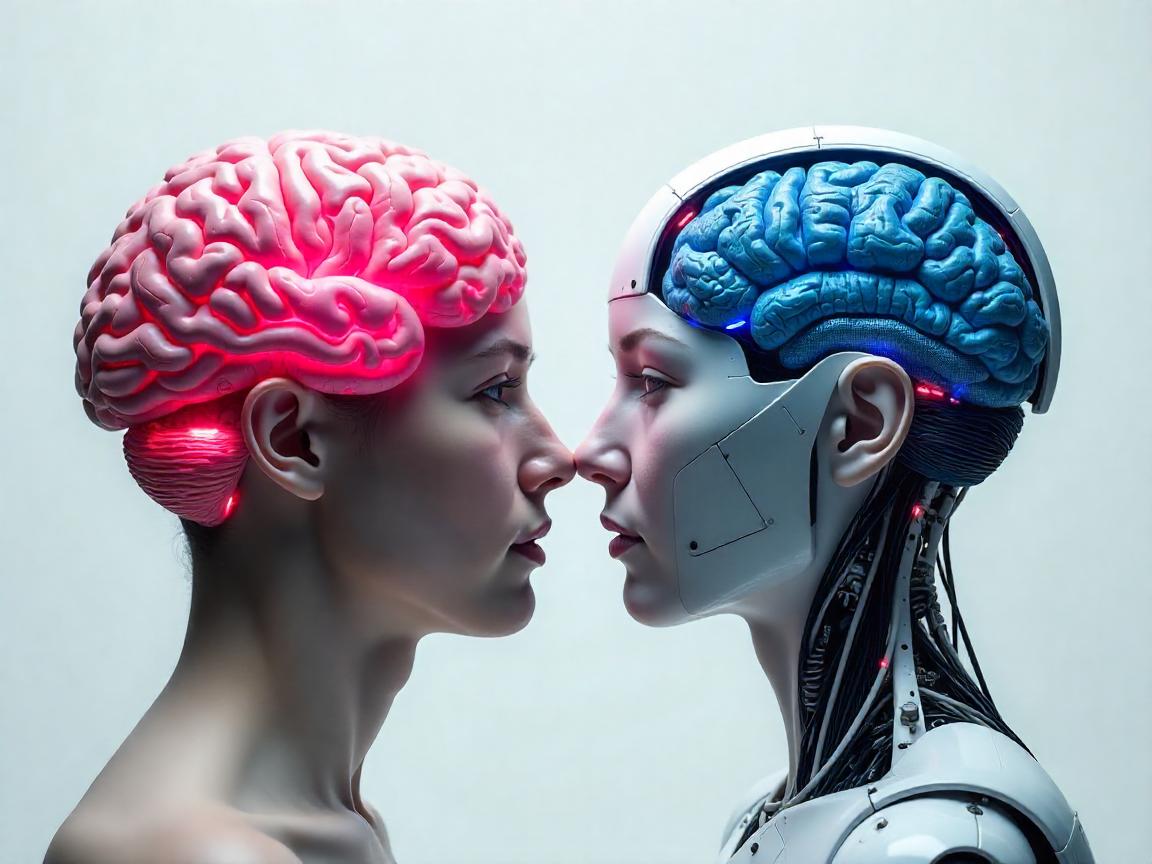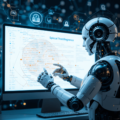Artificial Intelligence (AI) has transitioned from being a niche research field to a cornerstone of modern software development. Intelligent systems—software architectures that leverage AI, machine learning (ML), and deep learning (DL)—are now at the forefront of innovation across industries. These systems are designed to mimic human-like decision-making processes, enabling automation, optimization, and personalization at scale.
From autonomous vehicles navigating complex urban environments to recommendation engines predicting user preferences, intelligent systems are redefining what’s possible in software development. But how do we design and build these systems? What tools, methodologies, and considerations are involved? This blog post provides a detailed exploration of the principles, technologies, and best practices for building intelligent systems, equipping developers with the knowledge they need to thrive in the age of AI-powered software development.
What Are Intelligent Systems?

At their core, intelligent systems are cThey combine data processing, reasoning, learning, and decision-making capabilities to solve problems autonomously or semi-autonomously. Here’s a breakdown of the key components that make up an intelligent system:
1. Data Ingestion and Preprocessing
The foundation of any intelligent system is data. Raw data must be collected, cleaned, normalized, and transformed into a usable format. For example, in computer vision applications, images may need resizing, grayscale conversion, or augmentation techniques like rotation and flipping to improve model robustness.
Tools like Apache Kafka, Apache Spark, and Pandas are commonly used for data ingestion and preprocessing. Data pipelines often involve Extract-Transform-Load (ETL) processes to ensure consistency and quality.
2. Machine Learning Models
Machine learning models form the backbone of intelligent systems. These models are trained on historical data to identify patterns and make predictions. Common algorithms include:
– Supervised Learning: Used for tasks like classification (e.g., spam detection) and regression (e.g., stock price prediction).
– Unsupervised Learning: Useful for clustering (e.g., customer segmentation) and dimensionality reduction (e.g., PCA for feature extraction).
– Reinforcement Learning: Ideal for sequential decision-making tasks like robotics or game-playing agents.
Frameworks such as TensorFlow, PyTorch, and scikit-learn provide extensive libraries for implementing these algorithms. For example, TensorFlow’s Keras API simplifies neural network construction, while scikit-learn excels at traditional ML methods.
3. Inference Engines
Once trained, models are deployed in inference engines that process new inputs and generate outputs. For instance, a fraud detection system might use a pre-trained model to evaluate transactions in real-time.
Edge computing platforms like NVIDIA Jetson and Google Coral enable low-latency inference for IoT devices, while cloud-based solutions like AWS SageMaker and Azure ML offer scalable deployment options.
4. Feedback Loops
Intelligent systems continuously improve through feedback loops. For example, a recommendation engine might analyze user interactions (clicks, purchases) to refine its suggestions. Reinforcement learning systems similarly adjust their policies based on rewards or penalties received during operation.
Why AI-Powered Software Development Matters
The integration of AI into software development offers transformative benefits, but it also introduces new paradigms and challenges. Let’s explore why this approach is so impactful:
1. Enhanced Efficiency
AI automates repetitive and time-consuming tasks, freeing developers to focus on higher-level problem-solving. For example:
– Code Generation: Tools like GitHub Copilot use large language models to suggest code snippets, reducing manual coding effort.
– Bug Detection: Static analysis tools powered by AI can identify vulnerabilities and performance bottlenecks early in the development lifecycle.
2. Scalability
AI-driven systems can handle massive datasets and adapt to varying workloads seamlessly. Consider cloud-native architectures that leverage Kubernetes for orchestration and auto-scaling. These systems dynamically allocate resources based on demand, ensuring optimal performance under all conditions.
3. Personalization
Personalized experiences are a hallmark of intelligent systems. Recommendation engines, chatbots, and virtual assistants tailor their responses to individual users. For instance:
– Netflix: Uses collaborative filtering and content-based filtering to recommend movies and shows.
– Spotify: Employs matrix factorization techniques to create personalized playlists like Discover Weekly.
4. Cost Reduction
Automation reduces operational costs by minimizing errors and optimizing resource allocation. According to a McKinsey report, AI adoption could save businesses up to $15 trillion annually by 2030. For example, predictive maintenance systems in manufacturing reduce downtime by identifying potential equipment failures before they occur.
Key Technologies Behind Intelligent Systems
Developers rely on a variety of cutting-edge technologies to build intelligent systems. Below, we delve deeper into each technology and its role:
1. Machine Learning Frameworks
Frameworks like TensorFlow, PyTorch, and scikit-learn provide robust libraries for model training and deployment. For example:
– TensorFlow: Widely used for deep learning applications, including image recognition and natural language processing (NLP). Its distributed computing capabilities make it ideal for large-scale projects.
– PyTorch: Known for its flexibility and dynamic computation graph, PyTorch is favored in research settings. It supports advanced features like automatic differentiation and GPU acceleration.
2. Cloud Platforms
Cloud providers offer managed services that simplify AI development. Examples include:
– AWS SageMaker: A fully managed service for building, training, and deploying ML models.
– Google Vertex AI: Provides end-to-end MLOps capabilities, including experiment tracking and model monitoring.
– Microsoft Azure ML: Offers drag-and-drop interfaces for non-experts and integrates with Visual Studio Code for developers.
3. Natural Language Processing (NLP)
NLP enables machines to understand and generate human language. Libraries like Hugging Face Transformers and spaCy facilitate tasks such as:
– Text Classification: Categorizing documents into predefined classes (e.g., sentiment analysis).
– Named Entity Recognition (NER): Identifying entities like names, dates, and locations in text.
– Language Translation: Converting text from one language to another using sequence-to-sequence models.
4. Reinforcement Learning
Reinforcement learning trains agents to make sequential decisions by rewarding desirable actions. Applications include:
– Robotics: Teaching robots to perform complex tasks like grasping objects or navigating mazes.
– Gaming: Developing AI players capable of beating humans in games like Go and chess.
5. Edge Computing
Edge AI brings intelligence closer to the data source, reducing latency and bandwidth usage. Use cases include:
– Smart Cameras: Analyzing video feeds locally to detect intrusions or anomalies.
– Wearables: Monitoring health metrics like heart rate and activity levels in real-time.
Steps to Build an Intelligent System
Building an intelligent system involves multiple stages, each requiring meticulous planning and execution. Here’s a step-by-step guide:
Step 1: Define the Problem
Clearly articulate the problem you aim to solve. Ask questions like:
– What type of data will I need?
– What is the desired outcome?
– How will success be measured?
For example, if building a recommendation engine, the goal might be to increase user engagement by suggesting relevant products.
Step 2: Collect and Prepare Data
High-quality data is critical for model performance. Steps include:
– Data Collection: Gather data from APIs, databases, sensors, or third-party sources.
– Data Cleaning: Remove duplicates, handle missing values, and correct inconsistencies.
– Feature Engineering: Create meaningful features that capture underlying patterns.
Step 3: Select and Train Models
Choose an algorithm based on the problem type and dataset characteristics. Split your data into training, validation, and test sets to evaluate performance accurately. Hyperparameter tuning techniques like grid search and random search can optimize results.
Step 4: Deploy and Monitor
Deploy the trained model in a production environment using containers (e.g., Docker) or serverless functions (e.g., AWS Lambda). Monitor performance using tools like Prometheus and Grafana. Track metrics such as accuracy, precision, recall, and F1 score.
Step 5: Iterate and Improve
Intelligent systems require continuous improvement. Incorporate feedback loops to refine models and adapt to changing conditions. Techniques like online learning allow models to update themselves incrementally as new data arrives.
Challenges in AI-Powered Software Development

Despite its potential, AI-powered development comes with challenges:
1. Ethical Concerns
Bias in training data can lead to discriminatory outcomes. For example, facial recognition systems have been shown to exhibit racial bias due to imbalanced datasets. Developers must prioritize fairness, transparency, and accountability when designing AI systems.
2. Complexity
Building intelligent systems requires expertise in multiple domains, including statistics, programming, and domain-specific knowledge. Collaboration across teams is often necessary.
3. Security Risks
AI models are vulnerable to adversarial attacks, where malicious inputs trick the system into making incorrect predictions. Robust security measures are essential to mitigate these risks.
4. Resource Constraints
Training large-scale models demands significant computational power and energy. Efficient resource management is key to sustainability.
Best Practices for Success
To overcome these challenges, follow these best practices:
1. Start Small: Begin with pilot projects to validate ideas before scaling up.
2. Leverage Open Source: Utilize open-source libraries and communities to accelerate development.
3. Focus on Explainability: Ensure your models are interpretable and their decisions understandable.
4. Prioritize Data Governance: Establish clear policies for data collection, storage, and usage.
5. Stay Updated: Keep abreast of advancements in AI research and industry trends.
Real-World Applications
Intelligent systems are already transforming various sectors:
- Healthcare: AI-powered diagnostic tools assist doctors in identifying diseases from medical images.
- Finance: Fraud detection algorithms safeguard financial transactions.
- Retail: Inventory management systems optimize stock levels and reduce waste.
- Transportation: Autonomous vehicles navigate roads safely using computer vision and sensor fusion.
Conclusion: The Road Ahead
As AI continues to evolve, so too will the capabilities of intelligent systems. By mastering the tools and techniques outlined in this guide, developers can unlock unprecedented opportunities for innovation. However, success hinges not only on technical prowess but also on ethical responsibility and interdisciplinary collaboration.
The future of software development lies in building intelligent systems that augment human capabilities while addressing societal needs. Embrace this journey, and you’ll be at the forefront of a transformative era.
References
1. TensorFlow Documentation
2. PyTorch Tutorials
3. McKinsey Report on AI Economic Impact
4. AWS Machine Learning Services
5. Hugging Face Transformers












